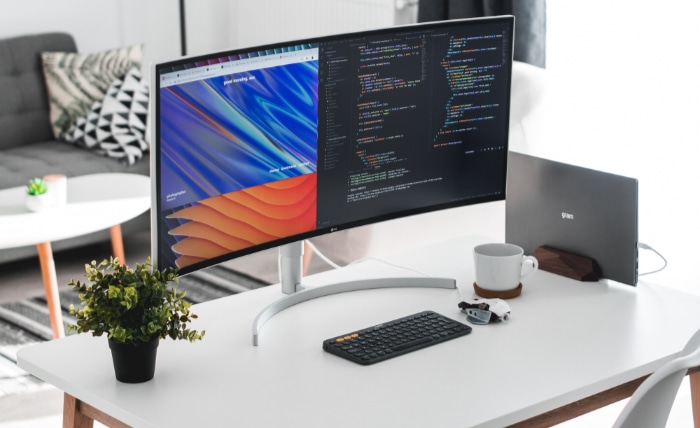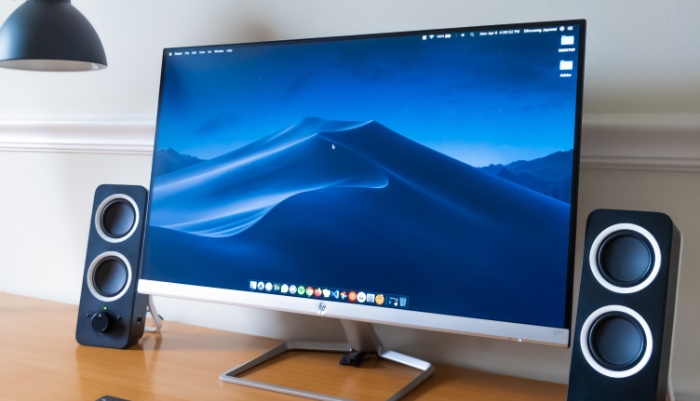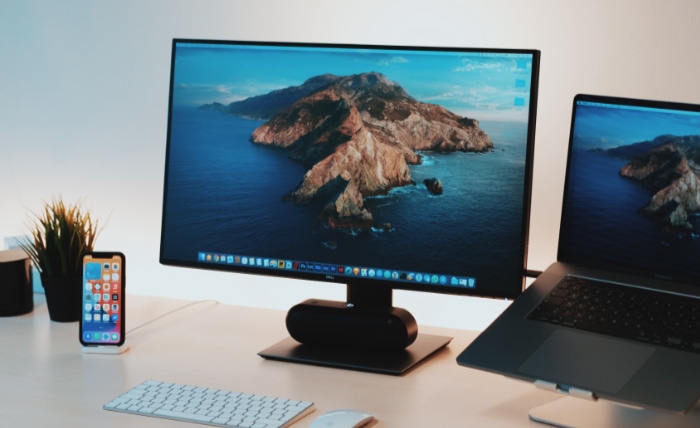Are 32″ Monitors Too Big? Finding the Perfect Monitor Size

As technology advances, larger displays have become increasingly popular, with many users opting for screens that offer more real estate for gaming, work, and multimedia consumption. Among the various options, 32-inch monitors have emerged as a top choice, which has sparked a heated debate among gamers, professionals, and general users alike. Is a 32-inch monitor too big, or is it the ideal size for gaming, work, and other tasks?
This comprehensive guide will examine the pros and cons of using a 32-inch monitor, discussing factors to consider when selecting a display size and comparing these larger screens with other popular monitor options.
Our aim is to help you make an informed decision about whether a 32-inch monitor is an ideal fit for your needs, preferences, and workspace.
Factors to Consider When Choosing a Monitor Size
When it comes to selecting the ideal monitor size, several factors come into play. It's essential to weigh these elements carefully to ensure that your chosen display aligns with your needs, preferences, and available space.
Personal Preferences
Your individual tastes and preferences play a significant role in choosing a monitor size. Some people prefer larger screens for an immersive experience, while others might opt for a smaller display to minimize eye strain or fit a compact workspace. It's crucial to identify what feels most comfortable and enjoyable for you.
Available Desk Space
The physical constraints of your workspace will also impact your choice of monitor size. A 32-inch monitor requires adequate space on your desk, as well as sufficient distance from your sitting position to ensure ergonomic comfort. Measure your desk and the available area to make sure the monitor you're considering will fit comfortably and maintain proper viewing distance.
Purpose (Gaming, Work, Multitasking, Etc.)
The primary purpose for which you'll be using the monitor is another critical consideration. For example, gamers may prioritize screen size and resolution for an immersive experience, while professionals might value screen real estate for multitasking and productivity. Keep in mind the specific tasks you'll be performing and the features that would be most beneficial for your use case.
Budget
Finally, your budget will undoubtedly influence your choice of monitor size. Larger monitors, particularly those with high resolutions and advanced features, tend to come with a higher price tag.
Consider your financial constraints and weigh the benefits of a larger monitor against the potential cost savings of a smaller or more modestly equipped display.
Advantages of 32-inch Monitors
The growing popularity of 32-inch monitors can be attributed to the numerous advantages they offer over smaller displays. From an immersive gaming experience to improved productivity, these larger screens have a lot to offer.
Greater Field of View
A 32-inch monitor provides a more expansive field of view compared to smaller screens, allowing gamers to see more of the game world. This increased visibility can lead to a more immersive and engaging gaming experience, particularly for open-world or adventure games.
Higher Resolutions
Larger monitors often support higher resolutions, such as 1440p or 4K. These resolutions offer significantly more detail and clarity compared to 1080p, enhancing the gaming experience with sharper graphics and more vibrant colors.
Enhanced Visual Details
With a larger screen size, gamers can appreciate the intricate details and textures of game environments and characters more easily. This heightened visual experience can make games feel more realistic and captivating.
Increased Screen Real Estate
A 32-inch monitor offers more screen real estate, making it easier to work with multiple windows, applications, or documents simultaneously. This increased space can greatly improve productivity by reducing the need to switch between tabs or windows frequently.
Better Window Management
Larger monitors facilitate better window management, enabling users to organize their workspaces more effectively. With a 32-inch screen, it's easier to arrange applications side-by-side or in custom configurations that suit your workflow.
Easier Collaboration and Presentation
For professionals who frequently collaborate or present their work, a larger screen can be beneficial. A 32-inch monitor makes it easier to share content with colleagues, display information in meetings, or review documents and designs with clients.
Better Movie and Video Experience
For those who enjoy watching movies, streaming videos, or viewing other visual content, a larger screen can provide a more enjoyable and immersive experience. A 32-inch monitor allows for greater detail and a more cinematic feel when consuming media.
Higher Resolution for Photo Editing
For photographers and graphic designers, a larger monitor with a higher resolution can be incredibly advantageous. The added screen real estate and enhanced detail of a 32-inch monitor make it easier to work with high-resolution images, providing more accurate color representation and finer control over edits.
Disadvantages of 32-inch Monitors

While 32-inch monitors offer numerous benefits, there are also some drawbacks to consider before making a purchase. In this section, we'll explore the potential disadvantages associated with using a larger monitor for gaming, work, and other tasks.
Eye Strain and Discomfort
With a larger screen, there is a higher risk of experiencing eye strain and discomfort due to increased viewing distance and the need to scan a larger area visually. To minimize this risk, it's essential to maintain an appropriate viewing distance and take regular breaks to rest your eyes.
Neck Strain from Excessive Head Movement
A larger screen may require more head movement to view different areas of the display, potentially leading to neck strain. Ensuring that your monitor is set up at the correct height and angle can help mitigate this issue, as can adjusting your sitting position to minimize head movement.
Proper Desk Setup and Distance
A 32-inch monitor requires adequate desk space and proper distance from your sitting position for ergonomic comfort. If your desk is too small or lacks the necessary depth, a larger monitor may not be the best choice.
Graphics Card Requirements for Gaming
For gamers, a larger monitor with a higher resolution may necessitate a more powerful graphics card to maintain optimal performance. This can be a significant consideration, as upgrading your graphics card can be costly and may require additional system upgrades.
High-Resolution Demands on System Resources
A higher resolution requires more processing power and memory, which can strain your computer's resources. This is particularly important for users who work with demanding applications or multitask frequently. If your system is not equipped to handle the demands of a 32-inch monitor, you may experience performance issues or lag.
The Ideal Monitor Size for Different Use Cases
When determining the ideal monitor size, it's important to consider how the display will be used in various contexts.
Gaming
The ideal monitor size for gaming largely depends on the types of games you play and your personal preferences. For example, competitive gamers may prioritize a smaller screen with a higher refresh rate for quicker response times, while players who enjoy open-world or adventure games may prefer a larger, more immersive display.
Balancing Screen Size, Resolution, and Refresh Rate
When choosing a monitor for gaming, it's crucial to find the right balance between screen size, resolution, and refresh rate. While a larger screen can enhance immersion, it's also important to consider the performance requirements of your system and whether it can support higher resolutions and refresh rates.
Work
The optimal monitor size for work depends on the specific tasks and applications you use daily. Professionals who work with multiple windows, documents, or large datasets may benefit from a larger screen, while those who primarily work with text or single applications may find a smaller monitor more suitable.
Assessing the Need for Multiple Monitors
In some cases, a single large monitor may not be the most efficient solution for work tasks. Professionals who require dedicated screens for specific applications or who need to constantly monitor data may find that a multi-monitor setup better suits their needs.
General Use and Multitasking
For general use and multitasking, the ideal monitor size depends on the range of tasks you perform and your media consumption habits. If you frequently watch movies, edit photos, or manage multiple applications, a larger monitor may be more beneficial. Conversely, if your daily tasks are more limited in scope, a smaller display may suffice.
Determining the Optimal Balance between Size and Functionality
When selecting a monitor for general use, it's essential to strike a balance between size and functionality. Consider the advantages and disadvantages of larger screens, as well as your personal preferences and workspace constraints, to identify the optimal monitor size for your needs.
Alternatives to 32-inch Monitors

If you're unsure whether a 32-inch monitor is the right choice for your needs, there are several alternatives worth considering.
Smaller Monitors (27-inch, 24-inch)
Smaller monitors, such as 27-inch and 24-inch displays, can be more suitable for certain users and situations. These monitors typically consume less power, are more affordable, and require less desk space.
They can be ideal for users with limited workspace or those who primarily work with text or single applications. However, they may not provide the same level of immersion or screen real estate for gaming, media consumption, or multitasking as larger monitors.
Ultrawide Monitors
Ultrawide monitors offer an alternative to traditional 16:9 aspect ratio displays, providing a more expansive horizontal screen space. These monitors can be particularly beneficial for gaming, offering a wider field of view for a more immersive experience.
They are also advantageous for productivity, as they enable users to work with multiple applications or documents side-by-side without the need for multiple monitors.
However, ultrawide monitors can be more expensive than their standard counterparts, and not all games or applications support the wider aspect ratio. Additionally, they may require more desk space and a higher level of graphics processing power.
Dual or Multi-Monitor Setups
Another alternative to a single large monitor is a dual or multi-monitor setup. Using multiple screens can offer increased screen real estate and improved productivity, as users can dedicate specific screens to certain tasks or applications. This configuration can also be advantageous for gamers who stream or multitask while playing.
However, multi-monitor setups can be more complex to set up and manage, and they may require additional hardware, such as a more powerful graphics card or a multi-monitor stand. Additionally, some users may find the bezels between screens disruptive, especially when consuming media or working with large documents or images.
Conclusion
Determining whether a 32-inch monitor is too big or the perfect size for your gaming, work, or general use needs depends on several factors. These include personal preferences, available desk space, the intended purpose of the monitor, and budget considerations.
While a 32-inch monitor offers several advantages, such as an immersive gaming experience, improved productivity, and enhanced media consumption, it also comes with potential drawbacks, such as ergonomic concerns, increased power consumption, and possible performance limitations.
It's crucial to carefully consider your unique needs, preferences, and circumstances before making a decision. Weigh the pros and cons of a 32-inch monitor against alternative options, such as smaller monitors, ultrawide displays, or multi-monitor setups.
By doing so, you'll be better equipped to choose the ideal monitor size that aligns with your requirements and delivers the optimal experience for your gaming, work, and other tasks.


